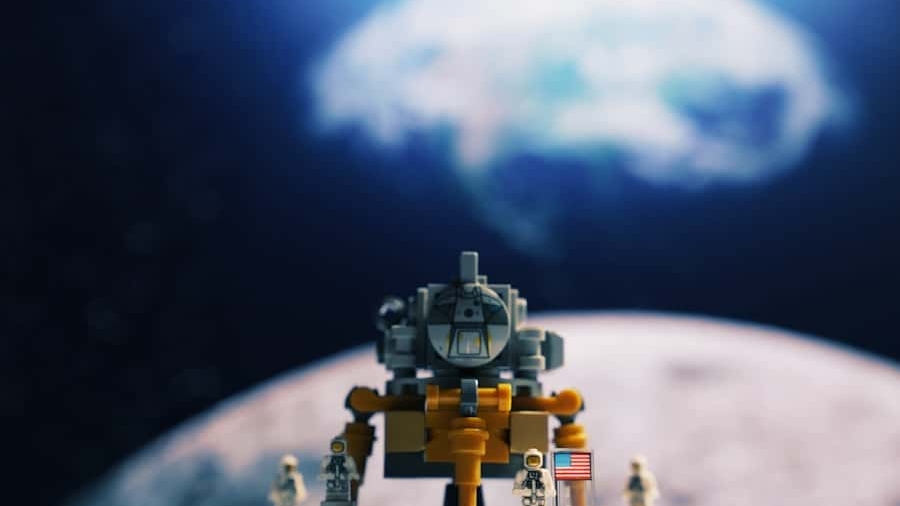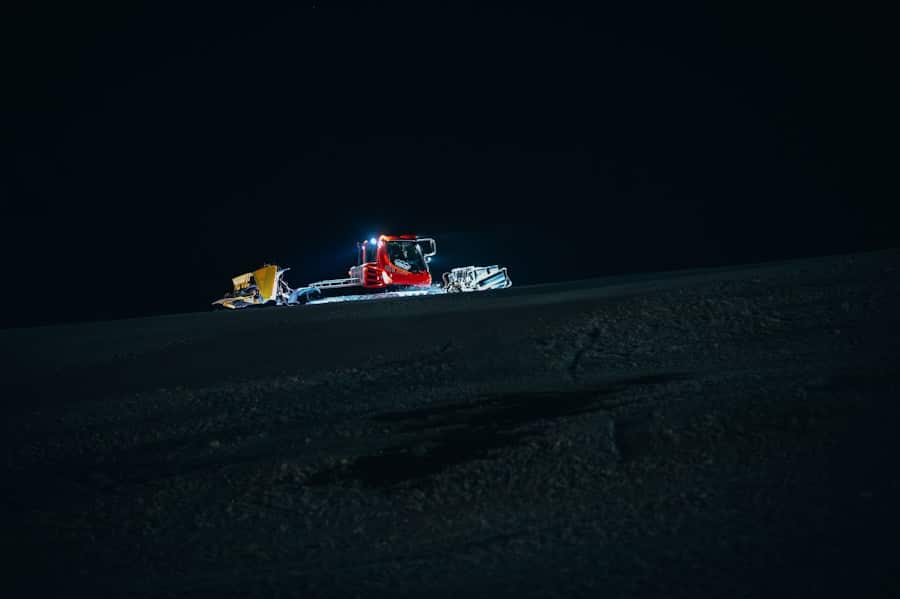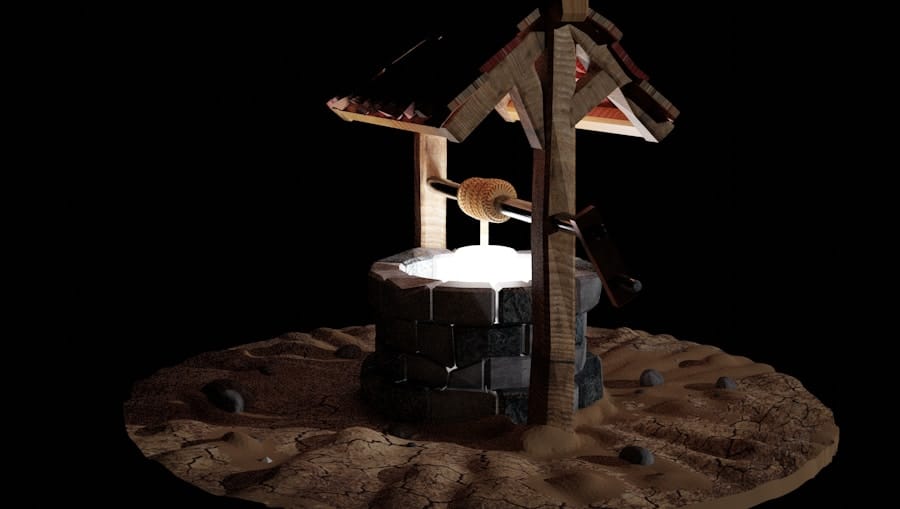The exploration of the Moon has long captivated humanity’s imagination, serving as a symbol of our quest for knowledge and adventure. With the advent of artificial intelligence (AI), lunar missions are entering a new era characterized by enhanced capabilities and unprecedented efficiency. AI-powered systems are being integrated into various aspects of lunar exploration, from mission planning and navigation to data analysis and autonomous operations.
This technological revolution is not merely an enhancement of existing methodologies; it represents a paradigm shift in how we approach space exploration. The Moon, as the nearest celestial body, serves as an ideal testing ground for these advanced technologies, paving the way for future interplanetary missions. As nations and private entities ramp up their lunar ambitions, the role of AI becomes increasingly critical.
The Moon is not just a destination; it is a stepping stone for deeper space exploration, including Mars and beyond. AI can help manage the complexities of these missions, enabling spacecraft to operate autonomously in harsh environments where human intervention is limited or impossible. By leveraging AI, we can optimize mission parameters, enhance safety protocols, and ultimately expand our understanding of the Moon’s geology, resources, and potential for human habitation.
Key Takeaways
- AI technology is revolutionizing lunar exploration missions, enhancing efficiency and safety.
- Collaborations between space agencies and AI companies are crucial for the success of lunar missions.
- Ethical and legal considerations play a significant role in AI-powered lunar exploration.
- AI has the potential to make groundbreaking discoveries and bring numerous benefits to lunar missions.
- The future of AI-powered lunar exploration holds great opportunities for further advancements and next steps in space exploration.
Advancements in AI Technology for Lunar Exploration
Data Analysis and Insights
For instance, NASA’s Lunar Reconnaissance Orbiter (LRO) has been gathering high-resolution images of the Moon’s surface since 2009. By employing AI techniques to process these images, researchers can identify geological features, locate potential landing sites, and even detect changes over time due to natural processes or human activity.
Autonomous Operations on the Lunar Surface
Moreover, AI-driven robotics are becoming increasingly sophisticated, allowing for more autonomous operations on the lunar surface. Robots equipped with AI can navigate complex terrains, make real-time decisions based on environmental data, and perform tasks such as sample collection and analysis without direct human oversight.
Enhancing Lunar Rover Capabilities
For example, the European Space Agency’s (ESA) Lunar Pathfinder mission aims to utilize AI to enhance the capabilities of lunar rovers, enabling them to adapt to unforeseen challenges and optimize their routes based on real-time conditions.
The Role of AI in Enhancing Lunar Mission Efficiency and Safety
AI plays a pivotal role in enhancing both the efficiency and safety of lunar missions. One of the most significant contributions is in mission planning and resource management. AI algorithms can analyze various mission parameters—such as fuel consumption, trajectory optimization, and time constraints—to devise the most efficient plans for spacecraft operations.
This capability is particularly crucial for missions that involve multiple objectives or require precise timing for landing and takeoff. In terms of safety, AI systems can monitor spacecraft health in real-time, identifying potential issues before they escalate into critical failures. For instance, predictive maintenance powered by AI can analyze data from various sensors to forecast equipment malfunctions, allowing mission control teams to take preventive measures.
Additionally, during landing operations, AI can assist in navigating through challenging terrains by processing sensor data to avoid obstacles and ensure a safe touchdown. This level of automation not only reduces the risk to human operators but also enhances the overall reliability of lunar missions.
Challenges and Limitations of AI-Powered Lunar Exploration
Despite the promising advancements in AI technology for lunar exploration, several challenges and limitations remain. One significant hurdle is the reliability of AI systems in unpredictable environments. The Moon’s surface presents a myriad of challenges, including extreme temperatures, dust storms, and rugged terrain.
This limitation raises concerns about the robustness of AI decision-making in critical scenarios where human lives or mission success are at stake. Another challenge lies in the integration of AI with existing systems and protocols used by space agencies.
Many current spacecraft and rovers were designed without considering advanced AI capabilities, leading to potential compatibility issues. Furthermore, there is a need for rigorous testing and validation processes to ensure that AI systems perform reliably under the unique conditions of space travel. The development cycle for space missions is lengthy and costly; thus, any delays or failures in integrating AI could have significant repercussions on mission timelines and budgets.
Collaborations between Space Agencies and AI Companies for Lunar Missions
The complexity of lunar exploration has prompted collaborations between traditional space agencies and innovative AI companies. These partnerships leverage the strengths of both sectors: space agencies bring extensive experience in mission planning and execution, while AI companies contribute cutting-edge technology and expertise in machine learning and robotics. For example, NASA has engaged with private firms like SpaceX and Google to explore how AI can enhance various aspects of lunar missions.
One notable collaboration is between NASA’s Jet Propulsion Laboratory (JPL) and several tech companies focused on developing autonomous systems for lunar rovers. By pooling resources and knowledge, these partnerships aim to create more capable rovers that can navigate autonomously while conducting scientific experiments. Such collaborations not only accelerate technological advancements but also foster innovation by combining diverse perspectives from different fields.
Ethical and Legal Considerations in AI-Powered Lunar Exploration
As we venture further into the realm of AI-powered lunar exploration, ethical and legal considerations become increasingly important. The deployment of autonomous systems raises questions about accountability—who is responsible if an AI-driven rover malfunctions or makes a decision that leads to unintended consequences? Establishing clear guidelines for liability is essential to address these concerns and ensure that all stakeholders understand their roles in the event of an incident.
Additionally, there are ethical implications related to data collection and usage during lunar missions. As AI systems gather vast amounts of data from the Moon’s surface, issues surrounding privacy and ownership may arise. While these concerns are less pronounced than they are on Earth, they still warrant careful consideration as we establish protocols for data sharing among international partners involved in lunar exploration.
Furthermore, there is a growing discourse around the potential militarization of space technologies; ensuring that AI applications remain focused on peaceful exploration rather than conflict is crucial for maintaining international cooperation.
Potential Discoveries and Benefits of AI-Powered Lunar Missions
The integration of AI into lunar exploration holds immense potential for groundbreaking discoveries and benefits that extend beyond scientific knowledge. One significant area of interest is resource identification; AI can analyze geological data to locate valuable materials such as water ice or rare minerals that could support future human settlements on the Moon or serve as resources for deeper space missions. For instance, identifying water ice deposits could facilitate sustainable living conditions for astronauts by providing essential resources for drinking water or fuel production.
Moreover, AI can enhance our understanding of the Moon’s geological history by analyzing surface features and patterns that may indicate past volcanic activity or impact events. This knowledge not only enriches our scientific understanding but also informs future exploration strategies by identifying areas that warrant further investigation. The ability to process large datasets quickly allows researchers to make connections that would be difficult or impossible through traditional methods.
The Future of AI-Powered Lunar Exploration: Opportunities and Next Steps
Looking ahead, the future of AI-powered lunar exploration is filled with opportunities that promise to reshape our understanding of both the Moon and our place in the universe. As technology continues to evolve, we can expect more sophisticated AI systems capable of performing complex tasks autonomously while adapting to dynamic environments. Future missions may involve swarms of small robotic units working collaboratively under the guidance of advanced AI algorithms to conduct extensive surveys or build infrastructure on the lunar surface.
Next steps involve not only technological advancements but also fostering international collaboration among space agencies and private companies. Establishing frameworks for sharing knowledge, resources, and data will be crucial as we embark on this new era of exploration. Additionally, ongoing discussions about ethical considerations will shape policies that govern how we utilize AI in space exploration responsibly.
As we stand on the brink of this exciting frontier, it is clear that AI will play a transformative role in unlocking the mysteries of the Moon and beyond.
In addition to the exciting advancements in AI-powered lunar exploration missions, another interesting article on Enicomp discusses the top trends on YouTube for 2023. This article explores the evolving landscape of online video content and how creators can stay ahead of the curve. To read more about this topic, check out Top Trends on YouTube 2023.
FAQs
What is AI-powered lunar exploration?
AI-powered lunar exploration refers to the use of artificial intelligence (AI) technologies to enhance and optimize the process of exploring the moon. This can include using AI for autonomous decision-making, data analysis, and navigation during lunar missions.
How is AI being used in lunar exploration missions?
AI is being used in lunar exploration missions to improve the efficiency and effectiveness of various tasks, such as autonomous navigation, image recognition, and data analysis. AI can also be used to assist in the planning and execution of lunar missions, as well as in the development of new technologies for lunar exploration.
What are the potential benefits of AI-powered lunar exploration missions?
The potential benefits of AI-powered lunar exploration missions include improved efficiency and accuracy in data analysis, enhanced autonomous decision-making capabilities, and the ability to explore more challenging and remote areas of the moon. AI can also help reduce the risk and cost of lunar missions by enabling more autonomous and intelligent spacecraft.
What are some challenges of using AI in lunar exploration missions?
Some challenges of using AI in lunar exploration missions include the need for robust and reliable AI algorithms in the harsh lunar environment, as well as the potential for communication delays between Earth and the moon. Additionally, ensuring the ethical and responsible use of AI in lunar exploration is an important consideration.
What is the future outlook for AI-powered lunar exploration missions?
The future outlook for AI-powered lunar exploration missions is promising, with continued advancements in AI technologies expected to further enhance the capabilities of lunar missions. AI is likely to play a crucial role in enabling more ambitious and complex lunar exploration missions, including the potential for human settlement on the moon.



